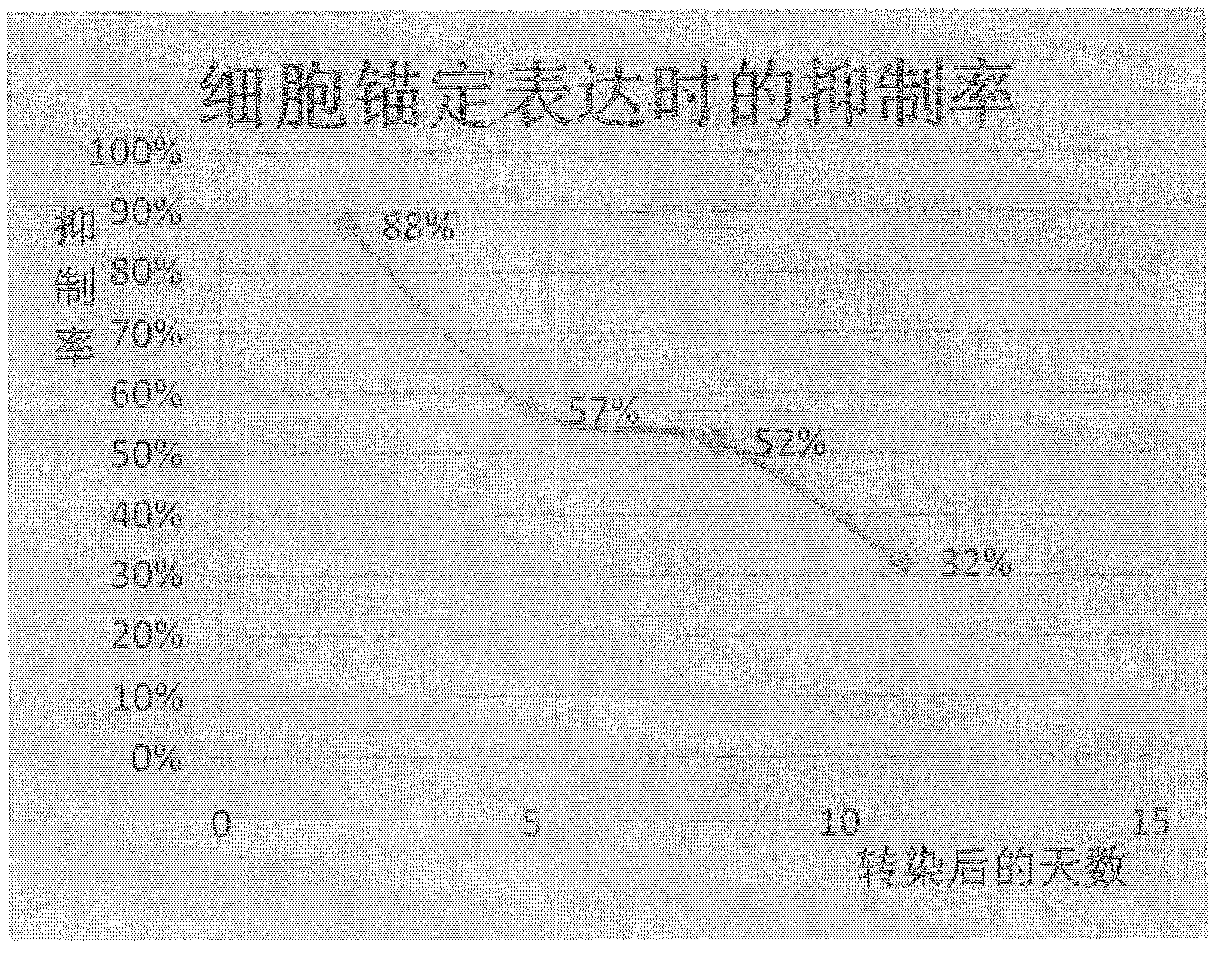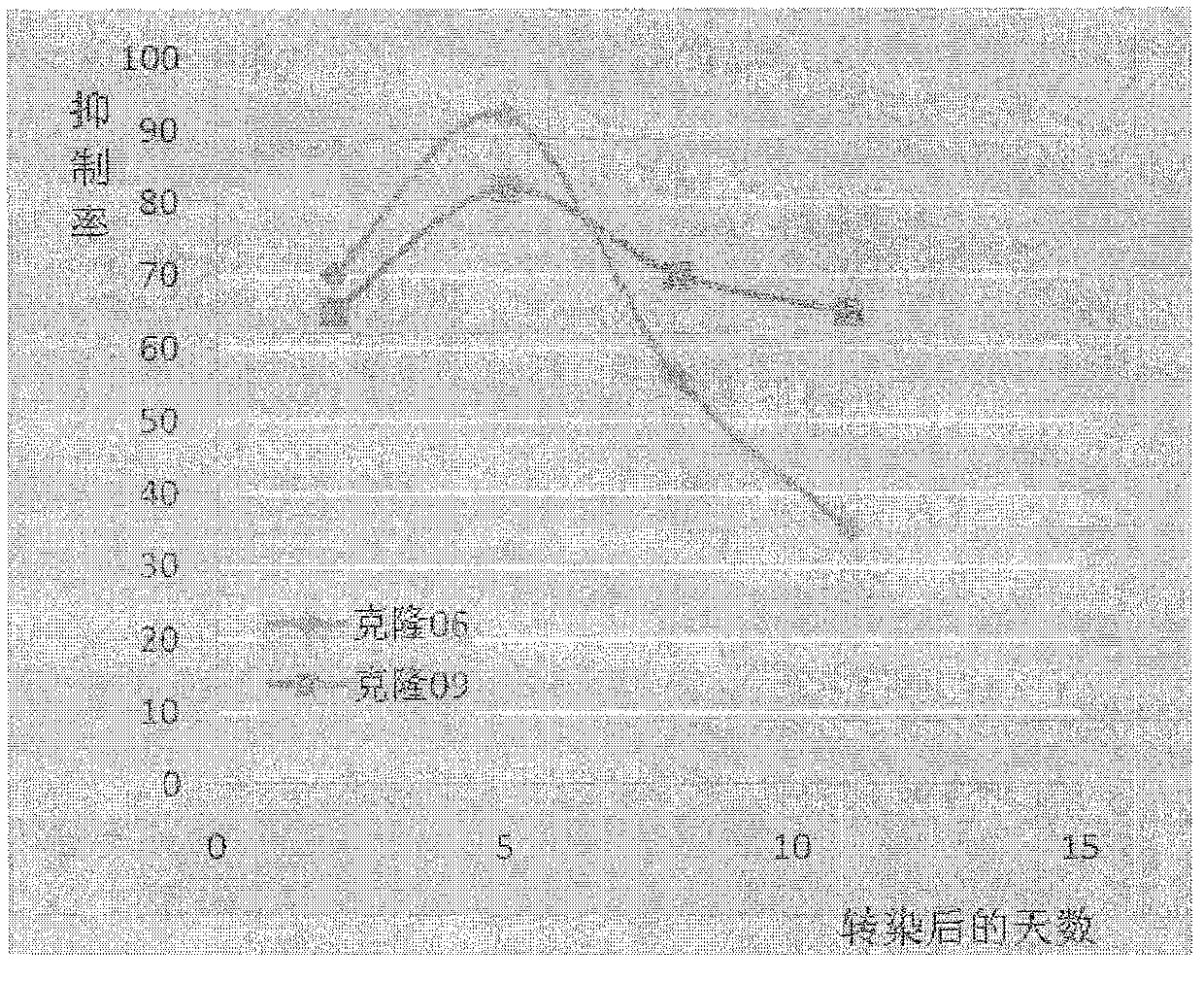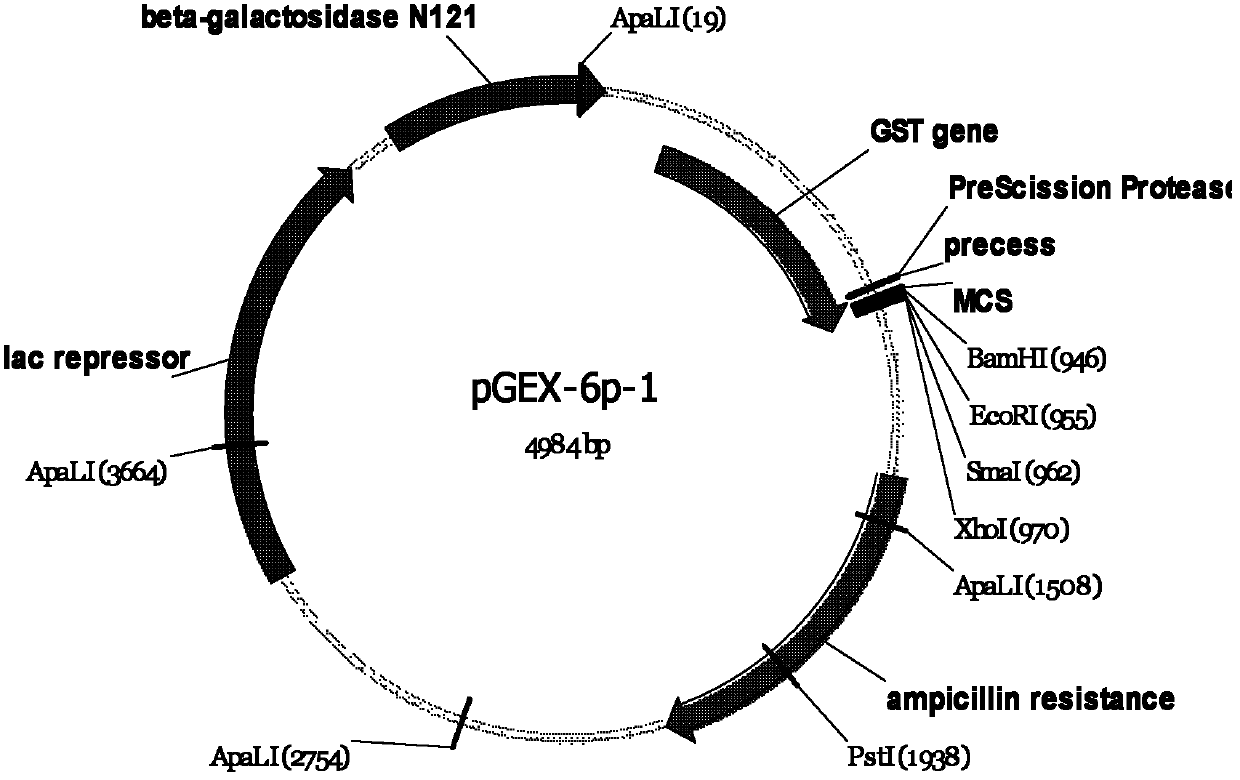Small-ring type DNA (deoxyribonucleic acid) recombinant vector for blocking HIV (human immunodeficiency virus)-1 membrane fusion and application thereof
A DNA recombination, HIV-1 technology, applied in the field of virology, can solve difficult and other problems
- Summary
- Abstract
- Description
- Claims
- Application Information
AI Technical Summary
Problems solved by technology
Method used
Image
Examples
Embodiment 1
[0059] Example 1: Effects of adding different labels on HR212 to the effect of virus suppression
[0060] In order to facilitate detection, purification and analysis, tags are often added to the N-terminus and C-terminus of a protein. However, the addition of tags will sometimes affect the functional effect of the target protein. The purpose of this example is to analyze whether the function of the tagged HR212 protein is affected.
[0061] Experimental design: Add the Flag tag and the Strep II tag to both sides of the HR212 protein (the amino acid sequence is SEQ ID No.1; the codon-optimized nucleotide sequence encoding HR212 in the present invention is SEQ ID No.2), After the protein is purified and digested in the form of GST fusion protein, the membrane inhibitory activity of HIV-I virus with recombinant HR212 proteins with different tags is detected by HIV pseudovirus inhibition. The following four types of HR212 were designed in the experiment: HR212-Flag (that is, the ...
Embodiment 2
[0134] Example 2: Pseudovirus effect when HR212 uses linkers of different lengths
[0135] Experimental design: The length of the joint between HR2 (SEQ ID No.34) and HR1 (SEQ ID No.33) may affect the membrane translocation ability of proteins expressed in eukaryotic cells. Different The eukaryotic expression vector was constructed in the form of a joint combination of length, and after the plasmid was extracted and purified, it was transfected into Hela cells, and the supernatant was collected for pseudovirus inhibition experiments to compare the effects of different joints on the function of HR212. The combination pattern of the experiment is as follows:
[0136] Clone 05: HR212-5-5: HR2-link05a-HR1-link05b-HR2-Flag
[0137] Clone 06: HR212-15-5: HR2-link15a-HR1-link05b-HR2-Flag
[0138] Clone 07: HR212-5-15: HR2-link05a-HR1-link15b-HR2-Flag
[0139] Clone 08: HR212-15-15: HR2-link15a-HR1-link15b-HR2-Flag
[0140] Where link represents a linker, and its amino acid sequen...
Embodiment 3
[0201] Example 3: Effects of using GPI-anchored and non-anchored expression
[0202] Experimental design: A GPI anchor sequence was added behind the HR2 gene of clone 06, and the ability of its exocrine protein and membrane protein to inhibit HIV virus invasion was compared when the anchor sequence was used and without the anchor sequence.
[0203] Clone 09: HR212-GPI: HR2-link05-HR1-link05-HR2-Flag
[0204] Experiment content:
[0205] 1: Preparation of clone 09:
[0206] Synthesize NewHR2 segment-Flag-GPI as follows
[0207] Cgtacgggaggttcaggtggatcaagcggaggttggatggagtgggacagagagattaataactacaccagcctgattcactcactcatcgaagagtcccagaaccaacaggagaagaatgagcaggaattgctcggtagcgctggaagcgattacaaggatgacgacgataagggaggttctccccccgccggcaccaccgacgccgcgcatccggggcggtccgtggtccccgcgttgctgcctctgctggccgggaccctgctgttgctcgagacggccactgctcccggaggttctgctccagctaagc
[0208] The restriction site is BsiWI-BlpI, which was ligated to clone 05 digested with the same enzyme to form a new clone. The new clone ...
PUM
 Login to View More
Login to View More Abstract
Description
Claims
Application Information
 Login to View More
Login to View More - R&D
- Intellectual Property
- Life Sciences
- Materials
- Tech Scout
- Unparalleled Data Quality
- Higher Quality Content
- 60% Fewer Hallucinations
Browse by: Latest US Patents, China's latest patents, Technical Efficacy Thesaurus, Application Domain, Technology Topic, Popular Technical Reports.
© 2025 PatSnap. All rights reserved.Legal|Privacy policy|Modern Slavery Act Transparency Statement|Sitemap|About US| Contact US: help@patsnap.com



